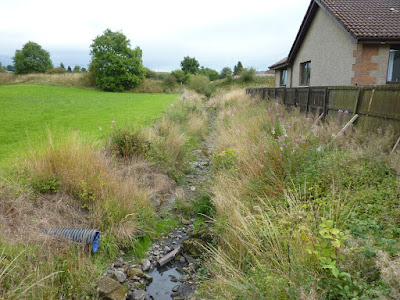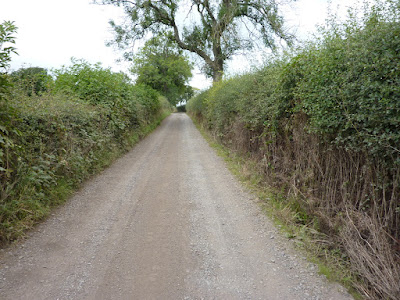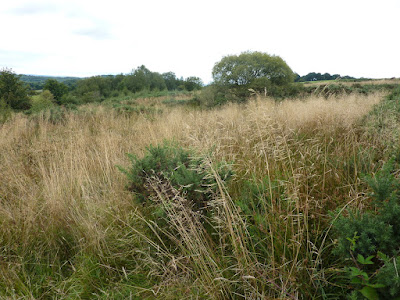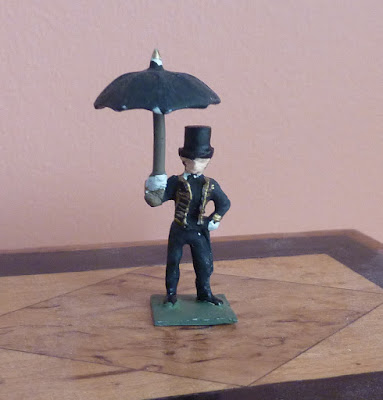Weather was reasonable today, so I packed some sandwiches and my camera and my walking boots, and drove off to Kilsyth. My intention was to get a better idea of the area of the battlefield to the north and east of the [modern] Banton Loch. Here's an annotated aerial view, courtesy of Google Maps and Paintshop Pro.
I've added the initial positions of the armies, as I understand them, a couple of extra place names, and the asterisks show the scope of my walk. North is at the top. A very quick resumé of the build-up to Kilsyth:
William Baillie's Covenanter army had been well beaten at Alford, and Montrose took the opportunity to head south, for the Lowlands. The Scottish government were terrified he was going to make for Edinburgh, but that city was plague-bound, and Montrose headed for Glasgow, via Stirling. Baillie followed, but was delayed by a number of issues, not least being the fact that he had to wait for someone to round up three Fife regiments which had decided to head for home. By the time the Covenant forces got onto our map, Montrose's troops had been camped on an elevated "meadow" in the Valley of the River Kelvin for a day or so, overlooking the road from Stirling to Glasgow, waiting to spring a nasty surprise on Baillie and friends.
[Please note that the village of Banton, the reservoir of Banton Loch and most of the roads apart from the Stirling road at the bottom did not exist until some time after 1645]
Baillie had the additional burden of having with him the chiefs of the Committee of Estaits (Argyll and others, whom Gardiner's history describes as having "a grasp of strategy proportional to their ignorance"). His scouts realised the Royalist army was waiting for them, so Baillie agreed with his "advisors" that his troops would leave the road, taking up a position on Montrose's flank, concealed by some rough ground. Baillie knew that the Earl of Lanark was coming from the West with a reinforcement of 1500 men for him (described as "tenants of the Hamiltons"), and appears to have been prepared to wait in this position until Lanark arrived. What he did not know (though Montrose, it seems, did) was that Lanark was only about a day's march away.
The political whizz-kids were keen that Baillie should attack Montrose's flank straight away. Baillie was convinced that the rough, rising ground to his front made such an attack impossible, so his counter-proposal was that he should face his troops to their right, and march them in column up to high ground at Auchinrivoch, where they would be above Montrose's left rear. This was agreed, so off went his column, with (I think) Balcarres' cavalry in the front, followed by a converged unit of commanded shot commanded by a Major Haldane, then Robert Home's veteran regiment of Foot, and the rest strung out, with the unhappy boys from Fife at the rear.
It's quite a pull up the hill (I did it today); it might have been a fair plan, but they didn't make it. Well, Balcarres' Horse might have, but the commanded shot and Home's regiment spotted some Highlanders occupying an area of enclosures at Auchinvalley, and headed west to attack them.
Thus the Battle of Kilsyth becomes, in effect, an encounter-type action. Montrose's army was rushing to its left flank, to face an attack coming from that direction, and Baillie was forced by the actions of his subordinates to form into an improvised battle line on rough ground, well short of (and lower than) the position he had intended. The subsequent progress of the day is for another post, or maybe for a game, so I'll return to the story of my scouting trip now.
I parked in Banton, near the Swan pub, at the crossroads, with the intention of walking up towards Auchinrivoch and Auchinvalley, to get some photos of how the land lies. Before I started, I spoke to a couple of residents, who were interested to know what this strange chap with hill boots and a stupid hat was doing in their village on a quiet Bank Holiday. I asked to check my directions for Auchinvalley - no-one had heard of it. They knew of Auchinrivoch - there is a farm there - but otherwise all places are known by who lives there. They wanted to know was it the Hendersons' place. Obviously I had no idea - and I certainly don't know who lived there in 1645. However, they were very kind, and got me on my way, and it isn't a very obvious track!
The oldest building I spotted was the one on the left, which was built in 1811 and rebuilt in 1845 (create your own story here).




































